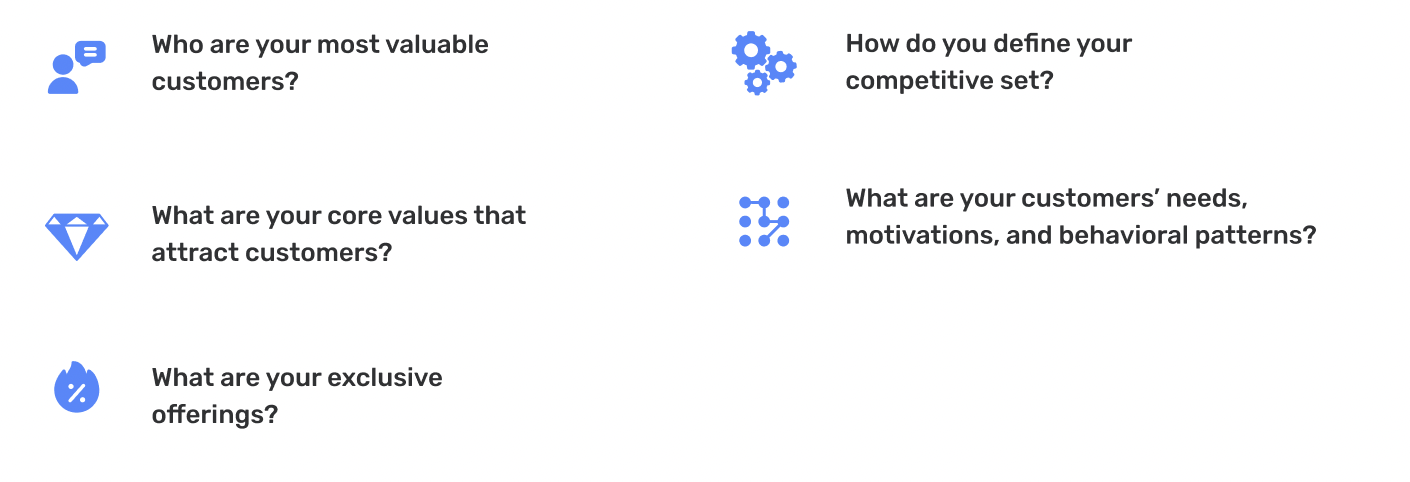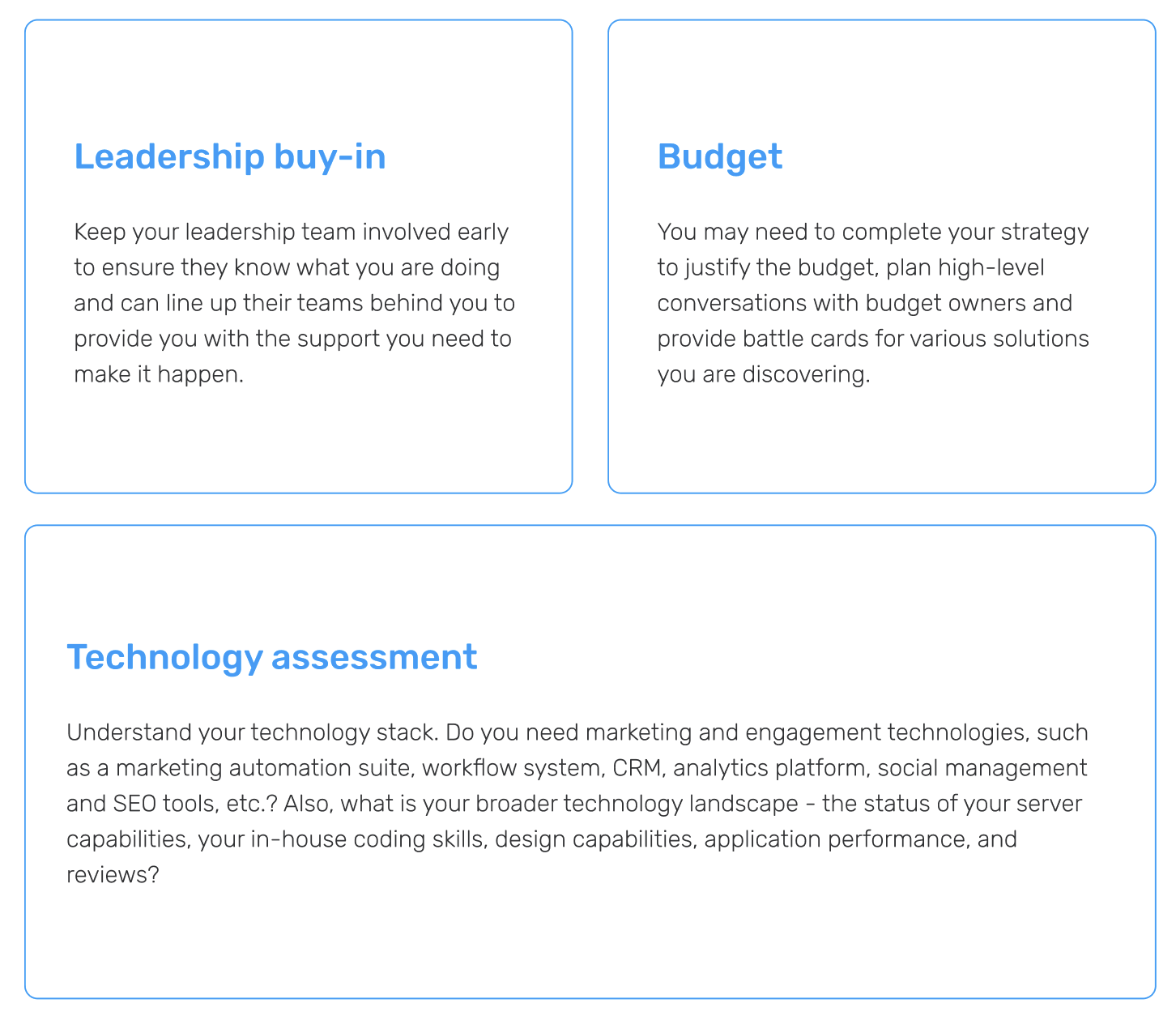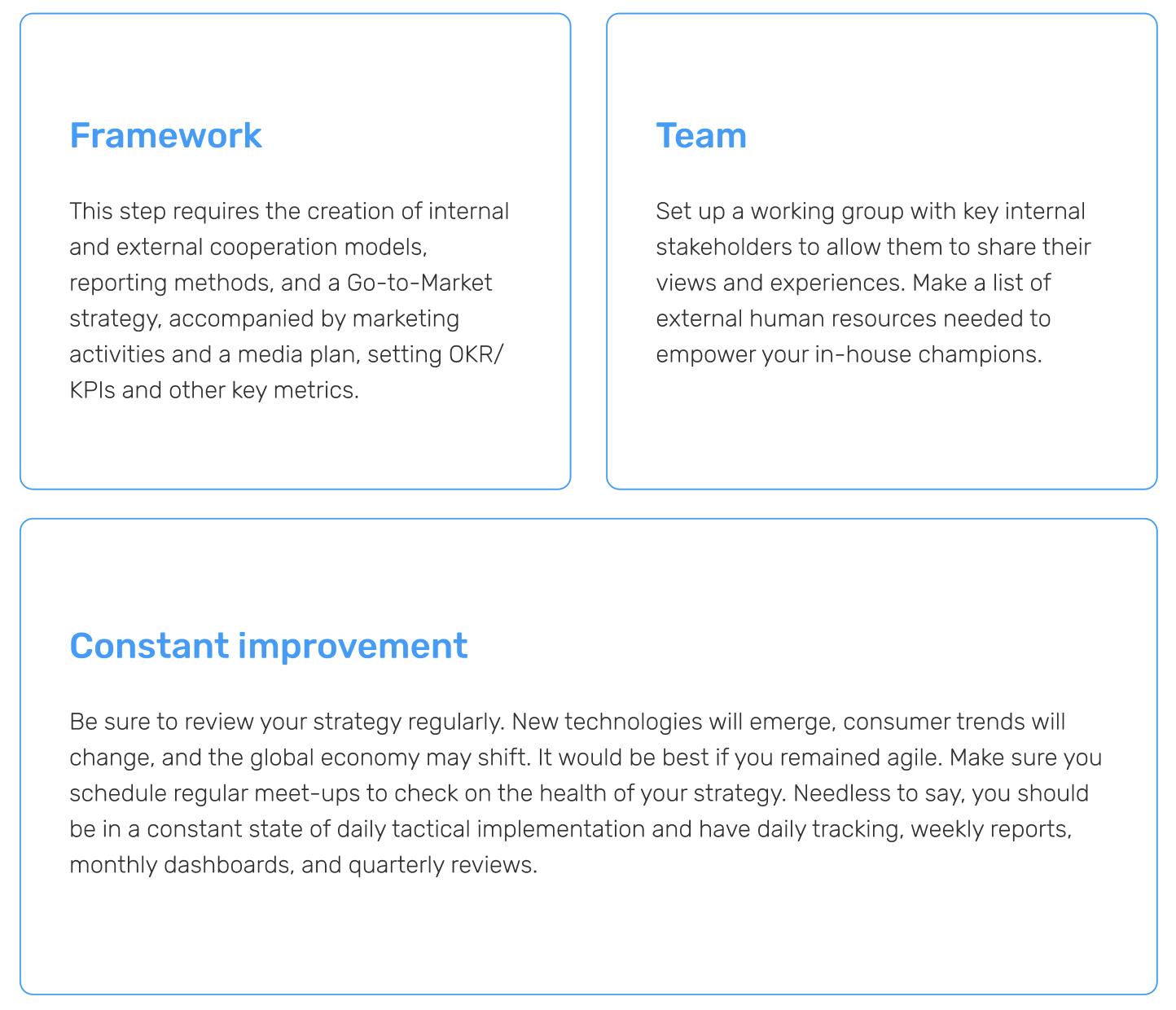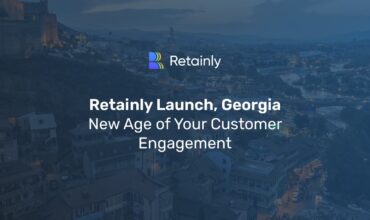Planning your customer engagement automation strategy – objectives, trends, and methods

No strategic approach to digital marketing is possible without a solid strategy for engagement automation in place. Planning implies the same techniques as building a house.
It is essential that we have a clear concept of what we are trying to build; we require a reliable foundation, and we have to know the intricate proportions and details of the brickwork and walls, the scope of the project, the cost, the timing and the qualifications of our builders.
Planning is a must if we want our house to meet our expectations and remain functional over the long haul. A strategy without a plan is nothing more than just an idea.

What is your current state of customer engagement?
 A saying applies to strategy development: “A problem well stated is half solved.”
A saying applies to strategy development: “A problem well stated is half solved.”
When the current state of things is clearly defined, it’s much easier to plan further.
The customer engagement inventory involves mapping existing customer segments and their needs to identify strategic opportunity areas.
Which customers, markets, channels, and broad categories should be pursued. The primary reason to pursue such inventory is improved business performance.
Obtain deep, proprietary insights in the first place.
Collecting existing customer information means analyzing historical data from your CRM and asking a critical question:
“What do you know about your key customers that your competitors don’t?”
Do not treat this question hypothetically.
There is real value in having clients lists full of proprietary insights. If your marketing team has trouble putting pen to paper or your database covers decades of your business, here are some questions to help with your inventory.

Having clarified the answers to the questions mentioned above, segment your clients into different groups based on their attitudes, motivations, and needs. This understanding should be obtained qualitatively and quantitatively.
There are organizations with staggering amounts of marketing intelligence for this purpose. It would seem that the more customer research, the better the understanding. Often the opposite is true. Your gut feeling may be biased. If your database is robust, analyze large amounts of data using artificial intelligence and other methods to identify patterns and trends in customer behavior rather than making hypothesis-based conclusions.
It is, therefore, critically important to consider that the digital customer can be anywhere, anytime. You must ensure that this is considered throughout all your decision-making during the inventory phase. Thus, create a list of all existing communication channels.
Where do you strive to get to?
So, now that you have a vivid understanding of the current state of your customer engagement, it’s time to do a bit of mapping. Mapping your customer segments by “to whom” and “for what” allows you to identify clear strategic areas of opportunities as a business.
In some cases, a wide range of perspectives is vital for strategic context. Still, there are other cases when a “deep dive” into a particular segment is more relevant.

Let’s take the simplest example. In most cases, the 80-20 rule applies: 20% of customers generate 80% of sales. This segment of “advanced customers” is the most engaged, sets the highest standards, provides deeper insight, and is usually more profitable. It pays to understand and keep them happy.
Another group that can be seen as a good example is the “marginal customers.” They tend to be outside the standard funnel and offer a cutting-edge perspective outside the mainstream. Remember the question: “What do you know about your key customers that your competitors don’t?” The best way to get the correct answer is to talk to your customers after doing your homework, i.e., inventory.
Finally, in identifying the new engagement and market opportunities, make sure to talk to both current customers and prospects. Your current customers provide valuable insights into their needs and why they have bonded with your brand. Potential customers will help you identify pain points, barriers to adoption, and opportunities for improved engagement.
Last but not least, exploring the trends and tendencies of customer engagement is essential.
Customer Engagement Trends to Explore in 2023
- Personalized holistic experience
 Personalization is so expected by customers that it is no longer just an option that businesses can consider. Instead, it is quickly becoming the norm and has been shown to deliver significant results. For example, this article illustrates that 63% of consumers will stop buying from brands that use poor personalization tactics.
Personalization is so expected by customers that it is no longer just an option that businesses can consider. Instead, it is quickly becoming the norm and has been shown to deliver significant results. For example, this article illustrates that 63% of consumers will stop buying from brands that use poor personalization tactics.
When personalization is empowered by robust marketing automation technology, it is the most effective customer engagement improvement a business can make to drive revenue growth. By adding personalization to your engagement strategy, you demonstrate to both existing and new customers that you know the difference their monetary contribution means to you.
2. Lies ruin friendly bounds
For those who have to lie to sell a product, you should rethink the product. An increasing number of brands are coming under scrutiny as social media sheds a bright light on any gaps and failures in their performance. If a brand is not sufficiently sincere, it will likely lose more than just its followers.
3. Enhanced self-service capabilities for the tech-savvy customers
Today’s customers are technologically savvy but have a shorter attention span compared to the past. Consequently, they quickly lose patience if they wait a long time for their issues to be resolved.
4. Mobile first, or you’ll be the last
 According to Statcounter, mobile has taken the lead at just almost 60 % of the global market, with desktop devices taking up to 38.5 % as of August 2022. The remaining percentage can be attributed to tablets, however, due to the operating system settings, they are more often used as mobile devices.
According to Statcounter, mobile has taken the lead at just almost 60 % of the global market, with desktop devices taking up to 38.5 % as of August 2022. The remaining percentage can be attributed to tablets, however, due to the operating system settings, they are more often used as mobile devices.
With these numbers, a business can understand where to reach and establish rapport with its customers. Thus, optimizing customer experience for mobile devices should be included in any intelligent customer engagement strategy.
Creating a mobile-friendly company website that will display and work smoothly on small screens for mobile users is one example of mobile optimization.
It will facilitate customers to interact with your business online, making it comfortable and easy.
Another good news for marketers is that as new technologies pop up and lead to changes in customer behavior, they will provide you with more platforms to leverage within your customer engagement strategies. Once these platforms are adopted, marketing teams will increase their chances of brand awareness and successful customer engagement.
5. Omnichannel Marketing
 Omnichannel marketing stands for the use of multiple platforms for brand marketing campaigns. It allows you to connect and touch base with existing customers and prospects.
Omnichannel marketing stands for the use of multiple platforms for brand marketing campaigns. It allows you to connect and touch base with existing customers and prospects.
When done right, omnichannel marketing delivers an enhanced user experience for your target audience and creates a holistic brand identity. To stay one step ahead, brands must be seamless. Offer a unique brand identity and consistent tone across your social media pages, SMS, web links, webhooks, emails, instant messengers, and other online touchpoints.
With Retainly being available on the market, being able to manage your customer engagement across multiple platforms isn’t the headache it ought to be.
How will you get there?
This stage happens before your engagement strategy starts to take shape. In addition to the areas we have already covered in this article, you should ensure that your homework is done. Now, you are ready to put it on paper.
There are several actions I would recommend including in your customer experience roadmap:


The bottomline
Product satisfaction is probably the most crucial aspect of this all-important principle: be focused exclusively on customers. Your personal preferences aren’t important. Your customers are what matter. Maniacally focus on the end customer to make your engagement strategy work. Put your customers first and look the business through their eyes.
Envision the future state of your customer engagement, plan it and get down to business!
Here, at Retainly, we deliberately developed our engagement automation platform as simple, functional, and agile. Book your free demo now to try the platform for free.



